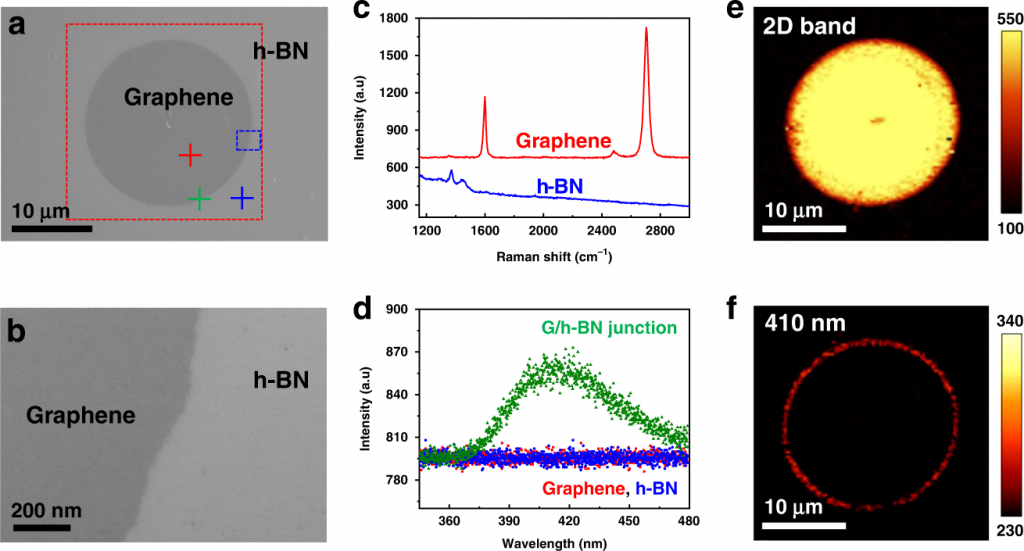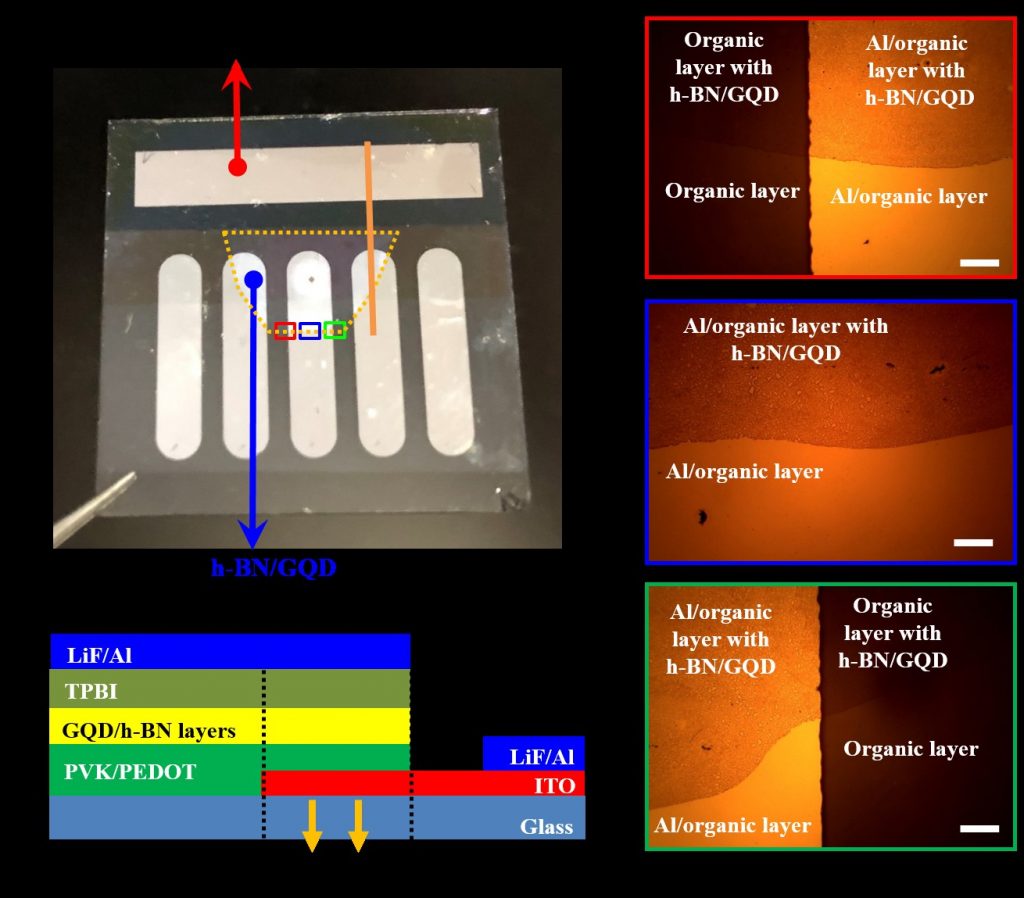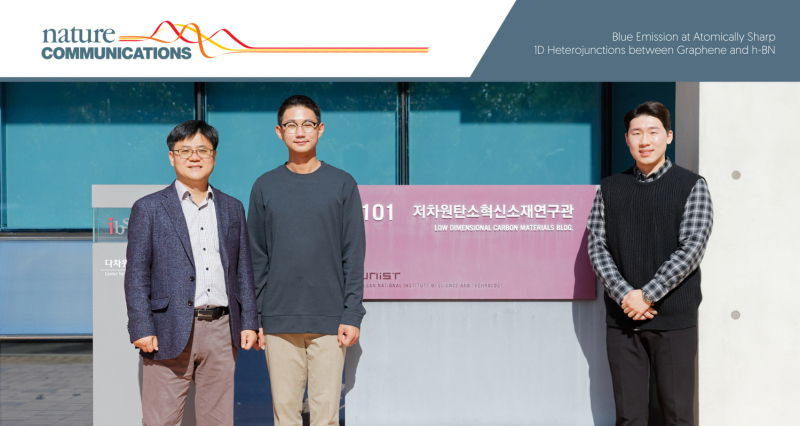A research team, led by Professor Hyeon Suk Shin in the Department of Chemistry at UNIST has demonstrated a blue-emitting atomic-resolved heterojunction between graphene and hexagonal boron nitride (h-BN), for the first time.
In the study, the blue-emitting photoluminescence (PL) emission was observed with a peak wavelength of 410 nm, equivalent to the PL result (blue line) of the G/h-BN interfaces. According to the research team, such emission is tentatively attributed to localized energy states formed at the disordered heterojunction between h-BN and graphene (G/h-BN junction). They also found that this weak blue emission at the 1D heterojunctions in a simple in-plane heterostructure of h-BN and graphene can be enhanced by increasing the amount of interface through embedding a graphene quantum dot array in an h-BN monolayer (GQD/h-BN in-plane heterostructures).

Figure 1. Characterization and PL analysis of graphene/h-BN in-plane heterostructures. (a), (b) SEM images of in-plane graphene/h-BN heterostructures fabricated by conversion reaction of h-BN on a Pt (111) single crystal. (c) Raman spectra of graphene (red) and h-BN (blue) regions on a SiO2/Si substrate using a 532-nm laser. (d) PL spectra of graphene (red), h-BN (blue) regions, and interface (green) using a 266-nm laser. (e), (f) Raman and PL mapping images of the 2D band (2630–2730 cm−1) and 410 nm wavelength, respectively, for the area inside the red square in (a).
The research team fabricated GQD/h-BN heterostructures and stacked them with h-BN intercalation layers to increase the total interface length, thereby improving PL emission. According to the research team the stacked 3D heterostructures had the GQD structures isolated in the vertical and planar directions by the h-BN matrix, which improved their emission efficiency.
“This work suggests that the narrowest, atomically resolved heterojunctions of in-plane two-dimensional heterostructures provide a future playground for optoelectronics,” noted Professor Shin.

Figure 2. GQD/h-BN in-plane heterostructures.
The findings of this research have been published in the online version of Advanced Energy Materials on October 23, 2020. This work has been jointly participated by Professor Seokwoo Jeon (Department of Materials Science and Engineering, KAIST) and Professor Byeong-Hyeok Sohn (Department of Chemistry, Seoul National University). It has been supported by the Global Frontier Research Program and the Basic Research Laboratory (BRL) Program through the National Research Foundation (NRF) by the Ministry of Science and ICT (MSIT).
Journal Reference
Gwangwoo Kim, Kyung Yeol Ma, Minsu Park et al., “Blue emission at atomically sharp 1D heterojunctions between graphene and h-BN,” Nat Commun, (2020).












